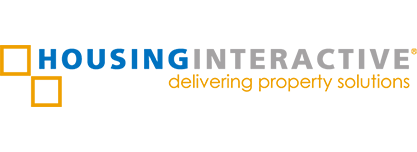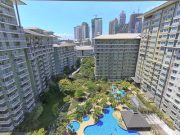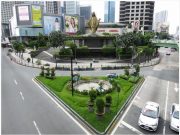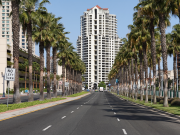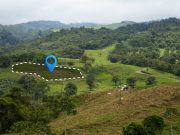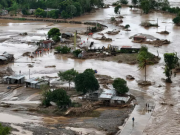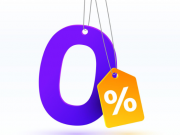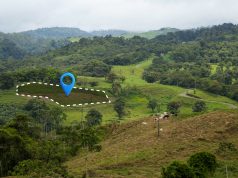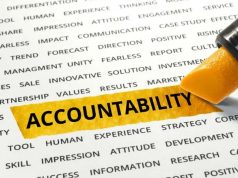The Philippine real estate market is ripe with opportunity for Overseas Filipino Workers (OFWs) seeking stable, affordable housing and smart investments, contributing to their financial independence. Bolstered by their significant remittances, OFWs are uniquely positioned to leverage a supportive environment designed to meet their housing needs and secure their financial future.
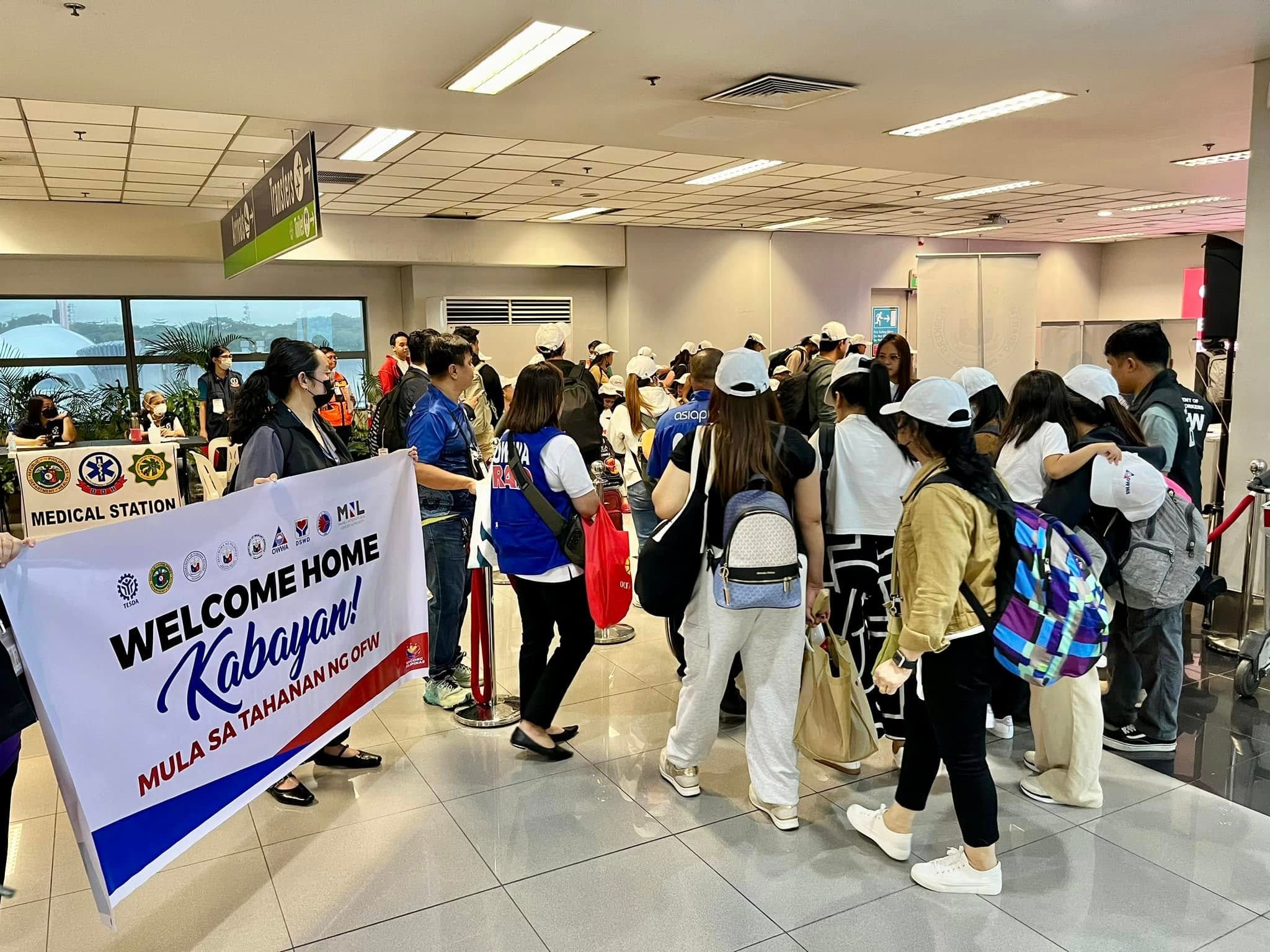
HousingInteractive: Empowering OFWs to Access Emerging Affordable Housing Opportunities
The Philippine real estate market is indeed a beacon of opportunity for Overseas Filipino Workers (OFWs) looking to secure their financial future through stable and affordable housing, especially as property prices remain favorable. Bolstered by their substantial remittances, OFWs are uniquely positioned to leverage a supportive environment designed to meet their housing needs.
As the Philippines’ first property portal, HousingInteractive plays a crucial role in empowering OFWs to navigate these emerging opportunities with the assistance of a property manager. We achieve this by delivering comprehensive property solutions that address their unique requirements and challenges.
Here’s how HousingInteractive assists returning OFWs:
- Centralized Access to Affordable Housing: We provide a dedicated platform that aggregates affordable housing options, including houses and lot packages, condominiums, and rental properties across various regions. This simplifies the search for OFWs who may be abroad and have limited time for on-ground property hunting.
- Showcasing Strategic Investments: HousingInteractive highlights properties that offer affordability and strategic value, considering factors like proximity to essential services, employment hubs, and potential for appreciation. This helps OFWs make smart investment choices for their long-term financial security, whether for family living, retirement, or rental income.
- Facilitating Informed Decisions: Through detailed property listings, high-quality visuals, and comprehensive neighborhood information, we enable OFWs to make informed decisions remotely. Our platform can provide insights into amenities, security features, and community vibrance, aligning with OFWs’ priorities for quality of life.
- Connecting with Regulated and Transparent Processes: We understand the importance of trust and transparency for OFWs investing from abroad. By featuring properties from reputable developers and within regulated markets, HousingInteractive supports a secure and clear purchasing process.
- Promoting Diverse Property Types: Recognizing that OFWs have varying needs, we showcase a mix of residential (single-detached, townhouses, condos) and even commercial and industrial properties, allowing them to explore options that best fit their individual or family goals.
- Bridging the Gap with Technology: As a leading property portal, we facilitate the digital aspects of property exploration and initial inquiries, streamlining the process for OFWs who may be working overseas.
“We believe every OFW, after their invaluable contributions abroad, deserves a stable and affordable home. HousingInteractive is here to ensure that journey is seamless, empowering them with the best property solutions the Philippines has to offer.”
— John Riad, CEO, HousingInteractive
Seize the Opportunity: Affordable Housing for OFWs in the Philippines
OFW remittances demonstrate consistent and robust growth, serving as a primary driver of domestic consumption, and are increasingly being channeled towards tangible assets, such as real estate, which benefits from ongoing infrastructure developments. Government initiatives offer tailored financial support and accessible housing options, while private developers actively cater to this significant market segment by providing diverse property types and flexible payment schemes.
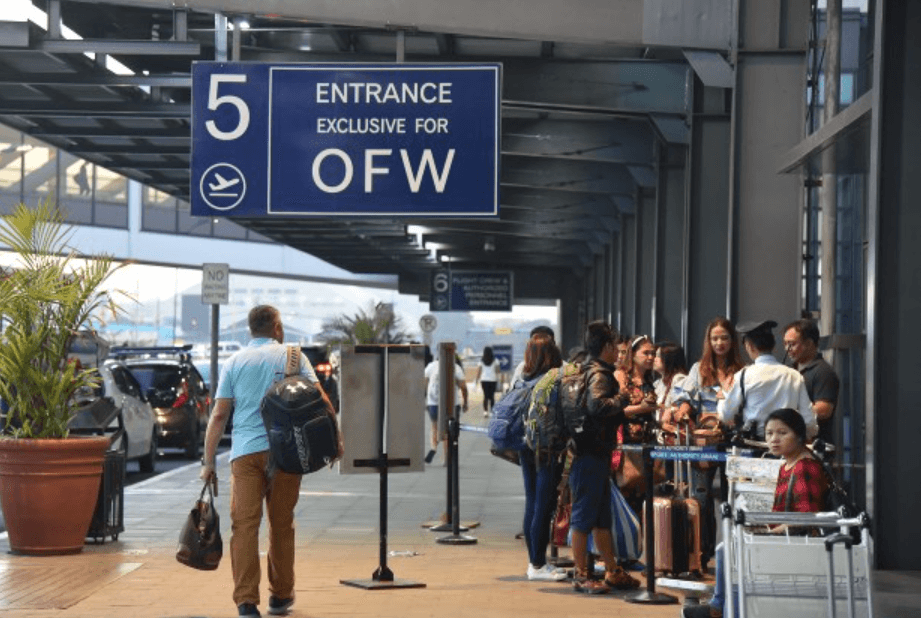
The OFW Landscape and Housing Imperative
OFWs, our “Bagong Bayani,” are crucial to the Philippine economy. Their remittances drive national growth and stability, deeply impacting families and communities. For most, owning a home in the Philippines is a top priority, representing financial security and a stable family environment. This strong desire ensures OFWs remain a key force in the housing market as they plan their future in the country.
Economic Impact of OFWs on the Philippine Economy and Housing Market
OFWs are crucial to the Philippine economy. Their remittances are consistently growing strong. In 2024, cumulative remittances hit a record $38.34 billion, with total personal remittances reaching $3.7 billion. This significantly contributed to the nation’s GDP (Gross Domestic Product) and GNI (Gross National Income). This steady inflow of money stabilizes household spending and makes the Philippine economy more resilient against global and local challenges. As more skilled Filipinos work abroad, we expect these vital remittances to increase even further.
Influence of Remittances on Consumer Spending and Housing Demand
OFW families are smart with their money, increasingly seeing real estate as a path to financial security, especially given the rising rental demand.
Here’s how OFW remittances are shaping spending and housing:
- Shifting Priorities: While basic needs like food and education remain important, OFWs are now putting more money into buying homes. The share of remittances used for house purchases almost doubled from 6.7% in late 2024 (Q3) to 12.7% in early 2025 (Q4).
- Building Wealth: This big jump shows OFWs are thinking long-term. They’re moving beyond just daily spending to build lasting assets and wealth.
- Boosting the Housing Market: This direct cash flow energizes the housing market, creating strong demand for:
- Affordable Housing: Homes typically priced between P1.5 million and P4 million.
- Condominiums
- House and Lot Packages
- Smart Investment: Buying property isn’t just about having a roof over your head; it’s about potential value growth and the chance to earn passive income through rentals. This smart approach helps create more stable economic growth and shows OFWs are becoming more financially savvy.
Financing and Smart Investment for OFWs
OFWs have great options for financing their home in the Philippines, helping them build wealth and secure their future, potentially creating a passive income stream. Here’s a breakdown:
What to Look At:
- Always check processing fees, loan terms, and eligibility rules for any loan.
- Understand the ongoing costs of owning a property, like property taxes and maintenance.
If you plan to rent it out, consider the potential rental income. This helps you build a strong financial plan and ensures your investment is sustainable.
Why Invest in Real Estate?
- It’s a clear path to financial freedom.
- You get a tangible asset—a property you can see and touch.
- It’s a great source of passive income if you choose to rent it out.
Smart Investment Tips:
- Know the risks, especially market ups and downs.
- Always have a well-planned investment strategy. This helps you secure your financial future and ensures your property truly adds to your long-term financial security.
By understanding these points, OFWs can make smart decisions to own a home and grow their wealth in the Philippines.
For our OFWs, investing in Philippine real estate isn’t just about buying a property; it’s about building a legacy. With the right financing and strategic choices, they can transform their hard work into a stable asset that generates passive income, ensuring a secure and prosperous future for their families back home.
— John Riad, CEO, HousingInteractive
Government Housing Programs
1. Pag-IBIG Fund Housing Loan
The Pag-IBIG Fund offers one of the most popular and accessible housing loan programs for Overseas Filipino Workers (OFWs), ensuring clarity in property titles. It’s specifically designed to help you buy or build your dream home in the Philippines.
What You Need to Know:
- Loan Amount: You can borrow up to P6 million for your housing needs.
- Eligibility:
- Be an active Pag-IBIG member with at least 24 months of contributions. You can even make a lump sum payment to meet this requirement, which is great for OFWs with irregular income.
- Be a Filipino citizen, at least 21 years old.
- Generally, you shouldn’t be older than 65 when the loan matures (though some cases extend to 70).
- You’ll need a successful credit check and no outstanding Pag-IBIG loans.
What You Can Use the Loan For:
- Buying a residential lot, house and lot, condo, or townhouse.
- Building or improving your home.
- Refinancing an existing housing loan.
- A combination of these.
Competitive Interest Rates:
- For minimum wage earners, there’s a highly subsidized rate of just 3% per year.
- For other members, rates start at 5.75% for a one-year fixed period and 6.25% for a three-year fixed period.
Flexible Terms:
- Loan terms can go up to 30 years, making your monthly payments more manageable.
Easy Application Process (Even from Abroad):
- Find your property.
- Verify your eligibility.
- Prepare documents like your employment contract, Certificate of Employment and Compensation (CEC), or Income Tax Return from your host country.
- Attend loan counseling.
- Submit all required papers.
- You can even appoint a trusted person in the Philippines to help process your application locally.
Pag-IBIG’s flexible rules, including lump sum payment options and tailored interest rates, are specifically designed to accommodate the unique financial situations of OFWs, making homeownership more achievable for our “Bagong Bayani.”
2. LandBank’s Bahay para sa Bagong Bayani (3B) Program
LandBank offers the Bahay para sa Bagong Bayani (3B) Program, a special loan designed just for OFWs. It provides flexible ways to buy, build, or renovate your home. Here’s what you need to know:
Who Can Apply?
- Filipino citizens.
- Between 21 and 65 years old when the loan ends.
- Must have a live employment contract from a reputable company.
- Must have a good credit history.
What Can You Use the Loan For?
- Buying a residential lot.
- Buying a house and lot, condo unit, or townhouse.
- Building or improving a home you already own.
- Refinancing an existing home loan.
- Taking over an existing home loan from LandBank or another bank.
Loan Details:
- Loan Amount: It depends on your ability to pay or 80% of the property’s value, whichever is lower. The loan must be for your main home, and the title must be in your name.
Loan Term:
- Up to 20 years if you have a co-borrower.
- Up to 15 years if you apply alone.
Interest Rates:
- Can be variable (changes yearly based on current rates).
- Can be fixed for 2 to 20 years.
- For socialized housing, rates are 1% lower than standard affordable housing rates.
This program truly understands OFWs’ unique work situations, like their contracts and need for flexible payments. By offering options for refinancing and loan assumption, it helps OFWs at different stages of homeownership, showing a strong commitment to making housing affordable for our “Bagong Bayani.”
3. National Housing Authority (NHA) Programs
The National Housing Authority (NHA) also helps OFWs get homes through programs like the Tahanan ng Bagong Bayani Housing Program (GEHP). While this program mostly serves government employees, OFWs are included as eligible applicants. Here’s how OFWs can benefit:
Who Can Apply?
- You must be a regular OFW.
- If you’ve received NHA housing before, your payments must be up to date.
- You shouldn’t be older than 65 when you apply (or 70 when the loan ends).
What You Need:
- Your Overseas Employment Certificate (OEC) or POEA Work Contract.
- Proof of income.
Housing Options:
- You can choose from house and lot packages, 2-story or 1-story duplexes, and low-rise buildings or condos.
- Projects are distributed across various regions, including Region I (La Union, Ilocos Norte), Region III (Pampanga, Bataan, Nueva Ecija, Tarlac), Region VI (Negros Occidental), and Region XI (Lanao del Norte, Davao City, Davao Oriental, Island Garden City of Samal), offering a wide range of housing options to accommodate the diverse needs of returning OFWs.
Payment Plans:
- Cash Sale or Staggered Cash.
- End-User Financing (through Pag-IBIG).
- In-house financing, which can have straight or escalating payments.
The NHA, including OFWs in programs like GEHP, shows that the government sees OFWs as a vital national asset, deserving of housing support. This opens up more housing choices and locations for returning OFWs, filling gaps that other programs might not cover.
4. DHSUD and SHFC: Pambansang Pabahay Para sa Pilipino (4PH) Program
The Pambansang Pabahay Para sa Pilipino (4PH) Program is the government’s main housing initiative, led by the Department of Human Settlements and Urban Development (DHSUD) and implemented by the Social Housing Finance Corporation (SHFC). Its goal is to provide affordable housing to low-income families, including OFWs. Here’s how it works and what it offers OFWs:
Who Can Join?
- Filipino citizens aged 18 to 65.
- You must be nominated by the Department of Migrant Workers (DMW).
- You shouldn’t have previously received government housing or currently own other property.
- You must not be involved in squatting activities.
- Crucially, you must be a member of a Community Association (CA) registered with DHSUD or another government agency. This CA represents families truly in need of housing, such as those in danger zones or affected by demolitions or disasters.
Affordable Homes & Subsidies:
- The program offers homes at reduced monthly costs thanks to various subsidies.
- DHSUD will subsidize up to 5% of your Pag-IBIG Housing Loan’s outstanding interest rate if you get a 4PH unit. This means much lower monthly payments for you.
Projects Are Happening Now:
- As of early 2025, there are 56 ongoing 4PH projects across Luzon, Visayas, and Mindanao.
- You can find projects supported by Pag-IBIG Fund in places like Palayan City, Bacolod City, and Bocaue (Bulacan).
- SHFC also has projects nearing completion in Crystal Peak Estates (San Fernando, Pampanga) and People’s Ville (Davao City).
- The program focuses on condominium-type developments to make the best use of government land.
This program shows a strong commitment to making housing affordable through teamwork between different government agencies. The focus on community groups and significant interest subsidies directly helps low-income OFWs achieve their dream of homeownership.
Private Real Estate Developer Initiatives
Major private real estate developers have strategically recognized the substantial purchasing power and strong aspiration for homeownership among OFWs, actively tailoring their offerings to this significant demographic. These developers provide a diverse portfolio of properties, including condominiums and house and lot packages, across various price points to cater to different segments of the OFW market.
Key Developers and Their Offerings for OFWs
Leading real estate developers in the Philippines offer various housing options, including commercial properties, with flexible terms tailored for Overseas Filipino Workers (OFWs):
- Amaia (Ayala Land):
- Focus: Quality, affordable house and lot, and condominium units in well-organized, family-friendly communities.
- Special for OFWs: “Uwi Na Tayo sa Amaia” campaign simplifies homeownership.
- Examples: Amaia Scapes Laguna.
- Payment: Flexible options include cash (with discounts), interest-free deferred financing (over 24 months), and bank financing (10-20% down payment).
- SM Development Corporation (SMDC):
- Focus: Wide range from premium condominiums to new horizontal developments.
- Special for OFWs: Projects like Symphony Homes in Mabalacat, Pampanga, are specifically marketed as ideal affordable investments.
- Offerings: Two-story units (townhouses, single-attached, shophouses).
- Prices: Symphony Homes start from P2.9 million up to P6 million.
- Payment: Various channels including major banks and e-wallets, with automatic monthly payment options.
- Megaworld Corporation:
- Focus: Diverse portfolio of condominiums and residential lots within townships in key locations (Metro Manila, Pampanga, Cavite).
- Payment: Known for flexible terms on pre-selling projects, sometimes with “no downpayment and 0% interest.”
- Financing Support: Assists buyers in securing bank and Pag-IBIG financing (does not offer in-house loans).
- Benefits of Pre-selling: Potential savings of up to 30%, with down payments as low as 10% payable over three years.
- Camella Homes (Vista Land):
- Focus: Largest developer of horizontal residential communities for the low to affordable-segment, with a nationwide presence.
- Pioneer for OFWs: One of the first to actively target the OFW market.
- Offerings: Inner-city townhouses to suburban single-family homes and condominiums.
- Prices: Start from as low as P1.4 million in some areas.
- Payment: Spot cash (with discounts), interest-free deferred cash (over 24 months), bank financing (12.5%-15% down payment), and in-house financing (19% interest).
- Pag-IBIG: While not direct, clients can process Pag-IBIG loans after a 20% down payment.
Our collaboration with private developers is fundamental to HousingInteractive’s mission. They are the bedrock, building the diverse, quality homes and offering the flexible financing solutions that directly empower our OFWs to turn their dreams of homeownership into a tangible reality, whether they’re looking for a family home or a smart investment.
— John Riad, CEO, HousingInteractive
Private developers cater to the diverse needs of OFWs by offering a wide range of properties, from affordable homes for families to mid-range investment options, often located beyond Metro Manila to provide more space and better connectivity. They support buyers with flexible financing plans and assist in securing loans from Pag-IBIG and banks, making homeownership more accessible, especially for those working abroad with unique income situations. This strategic approach by developers reflects their commitment to meeting the varied preferences of OFWs and facilitating easier access to property ownership.
Bank Home Loan Options for OFWs
In addition to government-backed programs, major private banks in the Philippines provide a comprehensive suite of housing loan options specifically designed to cater to OFWs, offering competitive rates and flexible terms.
Major Philippine banks offer tailored home loan programs to help OFWs buy property back home. Here’s a look at some key options:
1. BDO Home Loan:
- Start Abroad: You can begin your application even while overseas, but you’ll need a trusted family member in the Philippines to manage local steps using a Special Power of Attorney (SPA).
- Eligibility: Generally requires a P50,000 minimum gross monthly income (or foreign equivalent) and at least two years of continuous work abroad.
- Loan Amounts: Start from P500,000 (house/lot/construction) or P300,000 (vacant lots). You can borrow up to 80% of the property’s value for a house/lot/construction, or 70% for condos/vacant lots.
- Terms & Rates: Up to 20 years to pay. Competitive interest rates like 6.00% fixed for one year (promotional offers until September 2025).
2. BPI Housing Loan (My Overseas Pinoy):
- Focus: Designed for “easy, affordable, and accessible” financing for OFWs.
- Eligibility: Typically requires a P40,000 minimum household income.
- Loan Amounts: Start from P400,000, with a maximum of up to 90% of the property value.
- Terms & Rates: Up to 20 years to pay. General rates start at 7.00% for a one-year fixed period.
- “All-in Financing”: You can include bank fees (like processing, taxes, insurance) into your loan amount, reducing upfront costs.
- Process: You can apply online from abroad, but physical signing of documents in a BPI branch in the Philippines is required.
3. Metrobank Home Loan:
- Focus: Available for both land-based and sea-based OFWs who are actively employed or have renewed contracts.
- Loan Amounts: Minimum of P500,000, up to 80% of the property’s selling price.
- Terms: Flexible payment terms of up to 25 years.
These bank options provide crucial support, but always compare rates and terms to find the best fit for your financial situation.
Other Financial Assistance
1. Government Support for Returning OFWs: DMW and OWWA Programs
The Philippine government provides crucial support for returning Overseas Filipino Workers (OFWs) to help them get back on their feet and secure their future, including housing.
a. Department of Migrant Workers (DMW) Programs:
- AKSYON Fund: This fund offers immediate help to repatriated OFWs.
- It covers legal, medical, repatriation, and emergency needs.
- In 2024, financial aid increased significantly, ranging from P50,000 to P100,000 based on the OFW’s situation.
- National Reintegration Network (NRN): This is a joint effort with 15 government agencies, including the DSWD, to provide holistic, long-term support.
- Offers livelihood assistance, more financial aid, and referrals to help OFWs and their families stabilize their lives back home.
- Indirectly supports housing security by helping OFWs gain stable income, which is key to paying off housing loans or saving for a home.
B. Overseas Workers Welfare Administration (OWWA) Programs:
- Welfare Assistance Program (WAP): This program provides cash relief to OWWA members and their families facing difficult situations not covered by other programs (like natural disasters, death, illness, or job displacement).
- While not direct housing aid, it’s a financial safety net that helps prevent crises that could impact an OFW’s housing plans or investments.
- OFW-Enterprise Development and Loan Program (OFW-EDLP): This is a business loan specifically for returning OFWs or those still working abroad and their families.
- You can borrow between P100,000 and P2 million at a low 7.5% interest rate per year.
- It’s meant for starting or expanding a business, giving OFWs a stable income source upon their return.
- Directly supports long-term housing affordability by helping OFWs build sustainable livelihoods to meet mortgage payments.
The government’s robust initiatives for OFWs, particularly their focus on economic empowerment and housing stability, are critical pillars. We at HousingInteractive are proud to be a key partner in this endeavor, translating these vital programs into tangible property solutions that secure not just a house, but a future for our modern-day heroes.
— John Riad, CEO, HousingInteractive
These programs highlight the government’s commitment to supporting OFWs beyond their immediate return, focusing on economic empowerment and stability, which are vital for securing their homes.
Emerging Opportunities in Affordable Housing for OFWs
The Philippine real estate market offers exciting chances for OFWs to invest wisely and secure their financial future. Staying informed about key trends and understanding your options are essential for success.
Market Trends and Demand Drivers
The housing market is evolving, creating new opportunities for OFWs:
- Growing Demand for Affordable Homes: There’s a big push for more affordable and mid-range housing, reflecting a broad shift in what buyers want.
- Developments Outside Metro Manila: You’ll find a lot of new real estate projects springing up in fast-growing regions like CALABARZON, Central Luzon, Visayas, and Davao. These areas are popular with OFWs and offer more space and affordability than the capital, thanks to better roads and connectivity.
- Digital Transactions Are Key: Buying property from abroad is now easier than ever. Developers and banks are increasingly offering online platforms for property viewing, applications, and mortgage processing, making remote purchases smoother for OFWs.
- Sustainable and Eco-Friendly Homes: There’s a rising interest in sustainable housing. These homes not only benefit the environment but can also lead to lower utility costs, offering long-term value.
Innovative Housing Solutions
To meet the demand for affordable and efficient homes, new building methods are emerging:
1. Modular and Prefabricated Homes:
- Speed and Cost-Effectiveness: These homes are built faster and can be more affordable.
- CUBO Modular Inc.: Offers sustainable homes made with engineered bamboo, focusing on quick move-in. Some models start at P2.1 million and can be fully finished.
- Indigo Prefab House: Provides various prefab options, built quickly (some small units in hours) with components made off-site, ensuring durability and disaster resilience.
2. Other Innovative Construction Methods:
- Ovialand Inc.: Uses a special precast concrete system to build homes in as little as 45 days. This means you could move in within six months of the reservation.
- “HousEasy” Program: Ovialand offers dedicated support for documentation and financing, including low down payment options and quick loan approvals (as fast as 30 days) through partnerships with Pag-IBIG, BDO, and BPI.
Investment Opportunities Beyond Homeownership
Besides buying a home for yourself, the real estate sector offers ways for OFWs to grow their wealth:
1. Rental Properties for Passive Income:
- Steady Income: Investing in houses, condos, or apartments to rent out can provide a reliable income stream.
- Options: This includes long-term rentals (year-long leases), short-term rentals (like monthly rentals), or “house hacking” (renting out a part of your own home).
2. Managed Investments: For those who prefer a hands-off approach:
- Real Estate Investment Trusts (REITs): You can invest in companies that own income-generating real estate. REITs trade like stocks, offering liquidity and dividends.
- Real Estate Investment Groups (REIGs): You become a unit owner in projects managed by business partners who handle property management and tenants, providing rental income without the daily hassle.
To make the most of these opportunities, OFWs should set clear financial goals, thoroughly understand local market trends, and create a comprehensive financial plan that accounts for unexpected expenses. Navigating local laws on property ownership, titles, and taxes is also key to successful investment and a secure financial future.
Challenges Faced by OFWs (Abroad and Upon Return)
Despite their huge contributions, OFWs face many tough challenges both while working abroad and when they come back home. These difficulties can seriously affect their well-being and their ability to secure stable housing.
Challenges Abroad
Life overseas often brings significant stress:
- Tough Work Conditions: Many OFWs, especially in roles like domestic work, endure very long hours, little rest, and low pay, leading to exhaustion and financial strain.
- Job Insecurity & Discrimination: OFWs frequently deal with job insecurity, cultural differences, language barriers, and unfair treatment. Cases of abuse, exploitation, and “wage theft” are reported, particularly in systems like the kafala system. For example, in 2017 alone, the Philippine ambassador to Kuwait reported over 6,000 abuse complaints from domestic workers.
- Emotional Toll: Being separated from family for long periods leads to loneliness, homesickness, and emotional distance. Adapting to new cultures can also cause feelings of isolation and depression.
Challenges Upon Return
Coming home presents a new set of hurdles, often feeling like a complete “restart”:
Gaps in Reintegration Support:
- While the DMW’s AKSYON Fund provides immediate financial aid (P50,000 to P100,000) upon return, long-term support is often lacking.
- Some OFWs, like Cristy Lavador, a former OFW from Lebanon, report not receiving promised skills training (e.g., from TESDA) after initial help. This makes it hard to find steady jobs or start businesses, directly impacting their ability to afford housing.
Financial Struggles Back Home:
- OFWs often face much lower local salaries compared to what they earned abroad. This makes it tough to cover daily expenses, kids’ education, and housing loan payments, leading to continued financial stress.
- Many have to rely on small savings or their overseas experience to start small businesses, highlighting the need for more structured support.
Complicated Housing Paperwork from Overseas:
- Buying property from abroad can be overwhelming due to complex documents and processes. OFWs often need to use trusted representatives, which involves legalizing documents and careful coordination.
Risk of Scams and Bad Properties:
- Investing from afar carries risks like scams and faulty properties. Some OFWs have lost money due to dishonest representatives who take advantage of their absence and the complicated paperwork. Thorough research and working with trusted developers and lawyers are crucial.
Summary and FAQ Section
What are the Emerging Opportunities in Affordable Housing for OFWs Returning and Settling in the Philippines?
- Robust Remittances Drive Growth: OFW remittances consistently fuel the Philippine economy, with a growing portion directly invested in real estate, driving demand for affordable housing.
- Government-Backed Programs:
- The Pag-IBIG Fund Housing Loan offers competitive rates and convenient online services.
- LandBank’s Bahay para sa Bagong Bayani (3B) Program provides tailored financing.
- The flagship Pambansang Pabahay Para sa Pilipino (4PH) Program includes OFWs as priority beneficiaries, offering significant interest rate subsidies.
- Active Private Sector Engagement: Developers like Amaia, SMDC, Camella Homes, and Ovialand actively cater to OFWs with diverse, accessible properties and flexible payment terms, often integrating innovative and rapid construction methods like precast concrete and modular homes.
- Innovative Market Trends: Digital real estate platforms simplify the buying process for OFWs abroad. There’s also a growing focus on sustainable and eco-friendly housing solutions, offering long-term benefits.
- Strategic National Housing Roadmap: The Philippine Housing Roadmap 2025-2040 signals a sustained commitment to expanding affordable housing, creating a promising and stable environment for OFW homeownership through enhanced public-private partnerships.
Recommendations for OFWs:
While opportunities abound, OFWs must approach investments strategically, considering future development plans. Engage in meticulous financial planning and conduct thorough due diligence to safeguard your investments.
Recommendations for Stakeholders:
- Government: Streamline processes and provide more robust, long-term reintegration support for returning OFWs, addressing challenges like financial instability and susceptibility to scams.
- Developers and Financial Institutions: Continue to innovate and diversify offerings, leveraging digital platforms and integrating sustainable practices to better serve the unique needs of OFWs.
By capitalizing on these emerging opportunities and adhering to prudent investment practices, OFWs can confidently secure their future in the Philippine real estate market.
What are the benefits of investing in the Philippine real estate market for OFWs?
Investing in Philippine real estate offers OFWs benefits such as securing a tangible asset for their family’s future, potentially generating passive income through rentals, building wealth, and having a home to return to. It also provides a hedge against inflation and a stable investment compared to more volatile options.
How can OFWs finance their real estate investments?
OFWs can finance their real estate investments through various channels, primarily Pag-IBIG Fund housing loans, specialized OFW home loan products from commercial banks (like BDO and BPI), and in-house financing schemes offered by private developers. They can also utilize their savings and remittances for down payments or full cash purchases.
What are the key factors to consider when investing in the Philippine real estate market?
Key factors include location (accessibility, amenities, flood susceptibility, proximity to essentials), property type (house and lot, condo, lot only), developer reputation, financing options (interest rates, loan terms), the property’s potential for appreciation or rental income, and legal considerations (documents, ownership). OFWs should also consider their long-term plans (return to the Philippines or pure investment).
How can OFWs mitigate the risks involved in real estate investment?
OFWs can mitigate risks by conducting thorough due diligence on the developer and property, understanding all associated costs and legal requirements, ensuring stable income for loan repayments, considering property management services if they are abroad, diversifying investments, and seeking advice from reputable real estate professionals or financial advisors.
What are the potential sources of passive income in the Philippine real estate market?
Potential sources of passive income include long-term residential rentals, short-term rentals (e.g., Airbnb), house hacking (renting out parts of a property they occupy), and investing in Real Estate Investment Trusts (REITs) or Real Estate Investment Groups (REIGs) to meet their financial objectives.
HousingInteractive, the Philippines’ first property portal, is committed to empowering OFWs with readily available property solutions. Explore the vast opportunities in affordable housing across the Philippines and secure your family’s future. Visit HousingInteractive.com.ph today to find your perfect home or investment portfolio.
